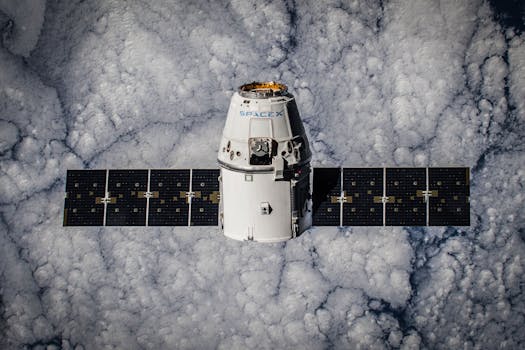
The Future of Satellite Technology: Trends and Innovations
Satellite technology has come a long way since its inception, and its future looks promising with the latest trends and innovations. The future of satellite technology is rapidly evolving, transforming the way we communicate, navigate, and understand our planet. The focus keyword satellite technology is at the forefront of this revolution, with new developments and advancements emerging every day.
One of the significant trends in satellite technology is the use of small satellites, also known as smallsats. These tiny satellites are designed to be more affordable and efficient, making them an attractive option for companies and organizations looking to launch their own satellites. Smallsats are being used for a variety of applications, including Earth observation, communication, and navigation.
Another trend in satellite technology is the development of reusable launch vehicles. Companies like SpaceX and Blue Origin are working on reusable rockets that can launch satellites into orbit and then return to Earth, reducing the cost of access to space. This technology has the potential to revolutionize the satellite industry, making it more affordable and sustainable.
Advancements in Satellite Communications
Satellite communications are also undergoing significant changes with the advent of high-throughput satellites (HTS). HTS offer faster data speeds and greater capacity, making them ideal for applications such as broadband internet, video streaming, and mobile connectivity. The use of HTS is becoming increasingly popular, with many companies investing in this technology to provide better services to their customers.
In addition to HTS, there is also a growing interest in low-Earth orbit (LEO) satellites. LEO satellites are designed to operate in lower orbits, which provides several advantages, including lower latency, higher data speeds, and improved connectivity. Companies like OneWeb and Amazon’s Kuiper Systems are working on LEO satellite constellations to provide global internet coverage and other services.
Earth Observation and Navigation
Satellite technology is also being used for Earth observation and navigation. Satellites like Landsat and Sentinel-2 are being used to monitor the environment, track climate change, and predict natural disasters. The data collected from these satellites is being used to inform decision-making and develop strategies for sustainable development.
In terms of navigation, satellites like GPS and Galileo are being used to provide location-based services, including navigation, timing, and mapping. These satellites are essential for many applications, including aviation, maritime, and transportation. The development of new navigation satellites like the European Union’s Galileo system is expected to improve the accuracy and reliability of navigation services.
Challenges and Opportunities
Despite the many advancements in satellite technology, there are also challenges that need to be addressed. One of the significant challenges is the issue of space debris, which poses a risk to the longevity and sustainability of satellite operations. The increasing number of satellites in orbit is also raising concerns about radio frequency interference and spectrum management.
However, these challenges also present opportunities for innovation and growth. The development of new technologies and strategies to address these challenges is expected to drive the satellite industry forward, creating new opportunities for companies and organizations to develop and launch satellites.
In conclusion, the future of satellite technology is exciting and rapidly evolving. With advancements in trends and innovations, satellite technology is transforming the way we communicate, navigate, and understand our planet. As the satellite industry continues to grow and develop, we can expect to see new technologies and applications emerge, driving innovation and progress in the years to come.


